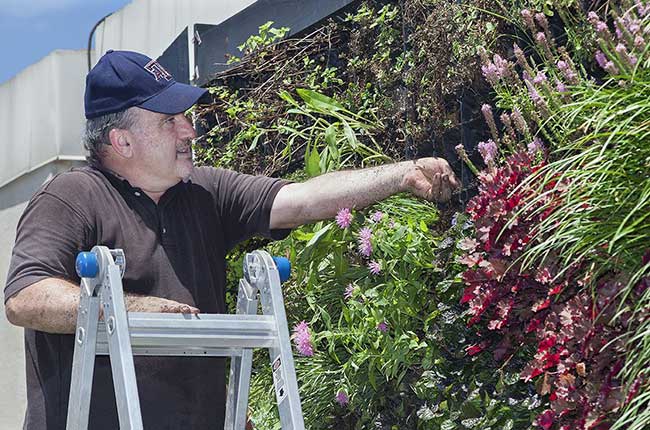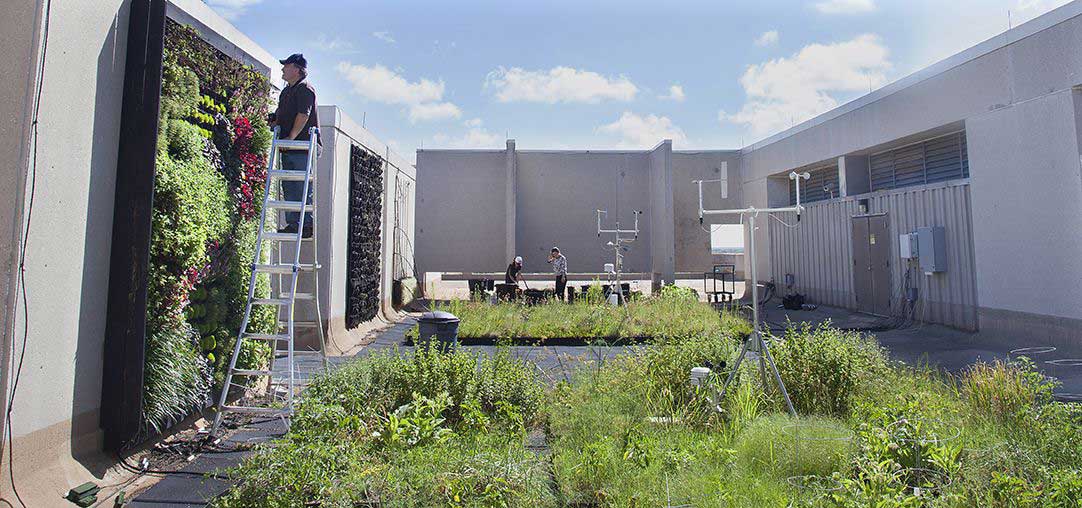To facilitate the proliferation of green roofs and walls throughout North America, Texas A&M University Professor of Landscape Architecture Bruce Dvorak called for the development of standards and guidelines to improve research, policy development and management within the industry in an award-winning review.
Green roofs and green walls are vegetated building surfaces that promise numerous benefits to urban areas, such as reducing a building’s energy use, cleansing stormwater, improving air quality, providing aesthetic benefits and increasing property values.
The review earned a 2017 Living Architecture Award of Excellence for Research from Green Roofs for Healthy Cities, a non-profit industry advocacy group. The review has been cited nearly 200 times in papers since its 2010 publication in Landscape and Urban Planning, a scholarly journal aimed at advancing conceptual, scientific and applied understandings of landscapes.
“It’s a classic guide for young green roof researchers,” said Richard Sutton, professor of agronomy and horticulture at the University of Nebraska, in a letter nominating the review for the award.
Some cities have built green roof pilot projects, adopted incentives for using green roofs or even require their use, said Dvorak, who has conducted interdisciplinary green roof and green wall research atop Building A of the Langford Architecture Center on the campus of Texas A&M since 2009.
“Although they’ve been popular across Europe for the past few decades, there is much to be learned regarding which plants favor rooftop environments in North America’s diverse ecological regions,” Dvorak said.
The literature review puts forth a broad, large-scale vision for making North American green roofs more bio-diverse and more regionally appropriate.
“Post-construction evaluations and results of North American green roof projects could help accelerate knowledge of field performance and strengthen project guideline and policy development,” said Dvorak, whose research interests also include sustainable design, planning and construction.
The comprehensive findings of scholarly literature on green roofs and walls were undertaken by Dvorak and Astrid Volder, a former associate professor of horticultural landscape ecology at Texas A&M, who is now an assistant professor of plant sciences at the University of California, Davis.
To investigate which plants have been tried in North American green roof projects and the ecological implications of those attempts, Dvorak and Volder reviewed green roof research papers published in peer-reviewed journals or presented at refereed conferences.
Because few of the projects they reviewed used widely accepted benchmarks set by the Association of Standards and Testing Materials (ASTM) or those of a well-known German landscape research society, the researchers found that many project results are difficult to interpret and less helpful in building a larger body of knowledge.
In concluding their review, Dvorak and Volder recommended that green roof investigations follow ASTM or other established benchmarks and that additional green roof investigations take place in several hundred ecoregions in North America.
###
Media contact: Richard Nira, architecture communications specialist, at 979-845-6863, or rnira@arch.tamu.edu; or Elena Watts, marketing and communications specialist, at 979-458-8412 or elenaw@tamu.edu.





